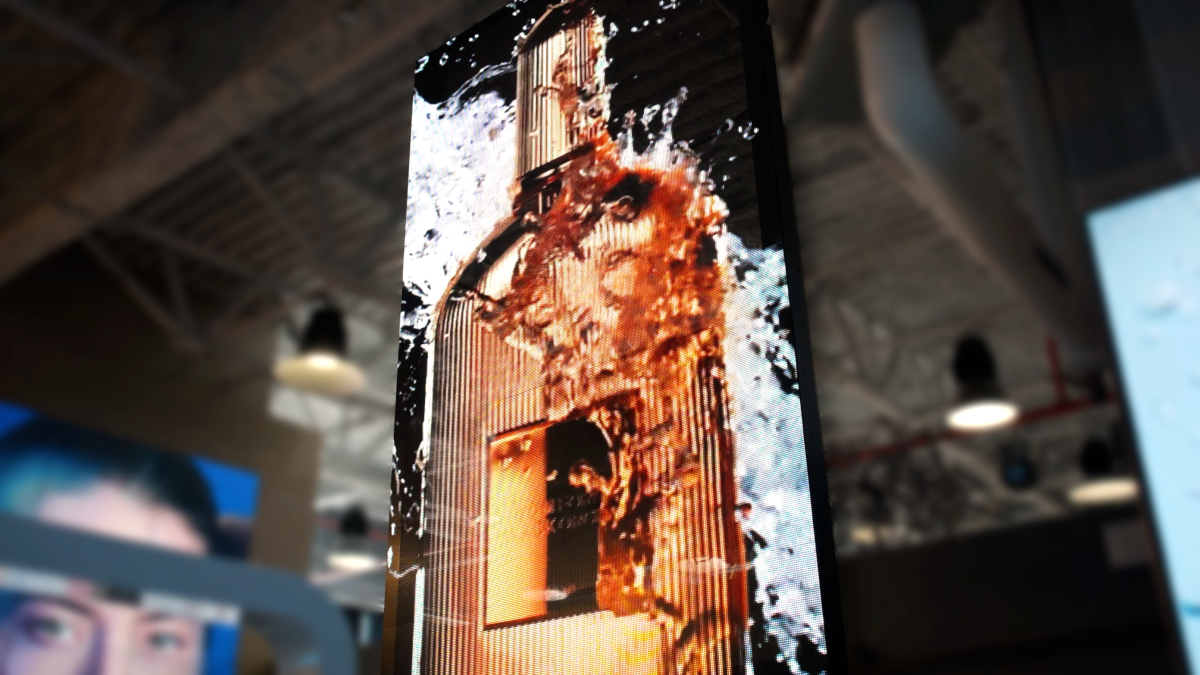Step into any retail environment and you’ll notice a quiet revolution taking place. Traditional signage and corrugated displays aren’t enough to grab the attention of shoppers. Today’s buyers expect more — a seamless blend of digital and in-store experiences that feel dynamic, interactive, and alive.
According to the National Retail Federation (NRF), 47% of all store executions will soon include some form of digital. That’s nearly half of retail spaces already blurring the line between physical and digital, transforming shopping into something immersive and connective.
Why This Matters for Brands
Digital signage isn’t just flashy tech — it’s a storytelling medium. It builds memorable experiences that stick with customers long after they leave the store, creating a connection that feels personal, engaging, and innovative.
With Lift and Learn technology, that connection becomes a real-time conversation. When a shopper picks up a product, the display responds instantly, sparking a two-way dialogue that informs, inspires, and empowers them to make confident decisions, right at the point of sale.
And the numbers tell the story: with 82% of purchase decisions happening in-store and 62% of shoppers making impulse buys, brick-and-mortar remains the heartbeat of retail.[1] Real-time, data-driven promotions are the difference-makers here — they’re not just helpful, they’re game-changers.

Data reigns supreme. Unlike traditional displays, digital signage can capture and report valuable insights. Which products are picked up the most? What content sparks engagement? How does shopper behavior shift at different times of the day? These insights empower brands to make smarter decisions about inventory, merchandising, and integrated marketing strategies.
When AI and customer data are layered into digital systems, promotions become personal, adapting by time of day, location, and shopper demographics to deliver up to 2.8x higher conversion rates than static signage.[2] Supported by comprehensive content management systems and analytics, retailers have control literally at their fingertips, making it easier to test different messages across locations, analyze what works, and fine-tune their approach.
The result? Faster-moving products, smarter promotions, and stronger brand loyalty — all powered by data and delivered through dynamic digital screens.
Three Cutting-Edge Technologies Shaping Retail
- Transparent Mesh LED: Turn heads and inspire action.
Digital storefronts dazzle, invite, and deliver. With 80% of shoppers stepping inside after seeing a digital sign, transparent mesh LED screens are more than just eye candy, they’re foot-traffic magnets.[3] These vibrant displays transform windows into dynamic billboards of any size, layering motion and storytelling over real products while maintaining up to 72% visibility from both sides. It’s the perfect blend of show and shop: captivating content that sparks curiosity without closing off the experience.
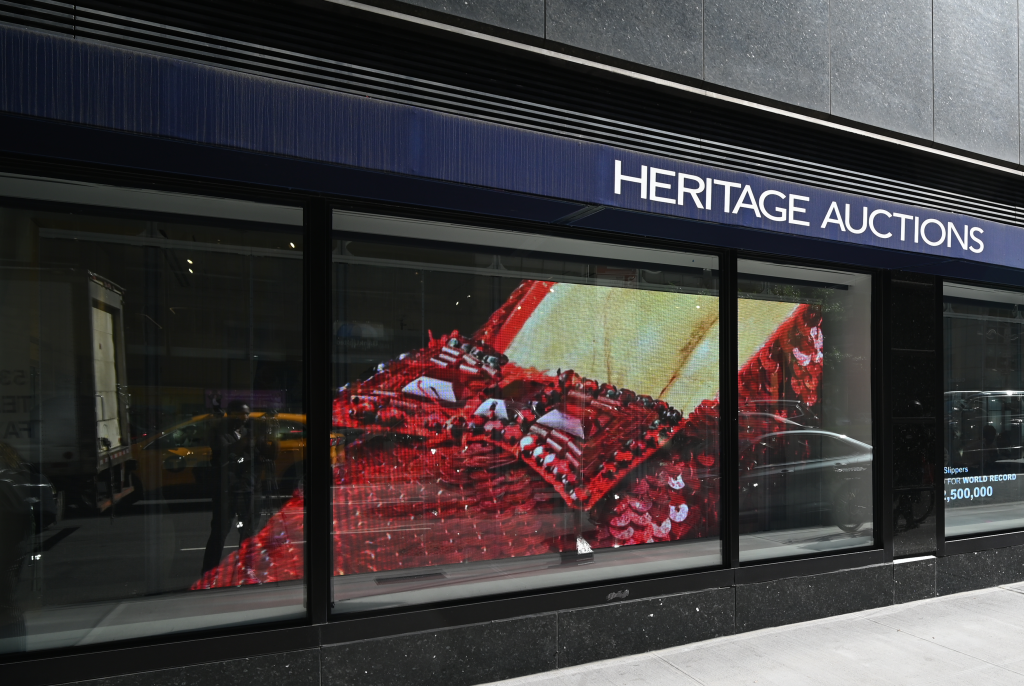
- Transparent OLED: Empower customers and elevate sales.
In-store digital signage becomes an active partner in the shopper’s journey. Interactive OLED screens invite exploration — allowing customers to compare features, view demos, and make confident choices right at the shelf. Retailers using this technology have seen sales jump up to 33% compared to traditional signage.[4]
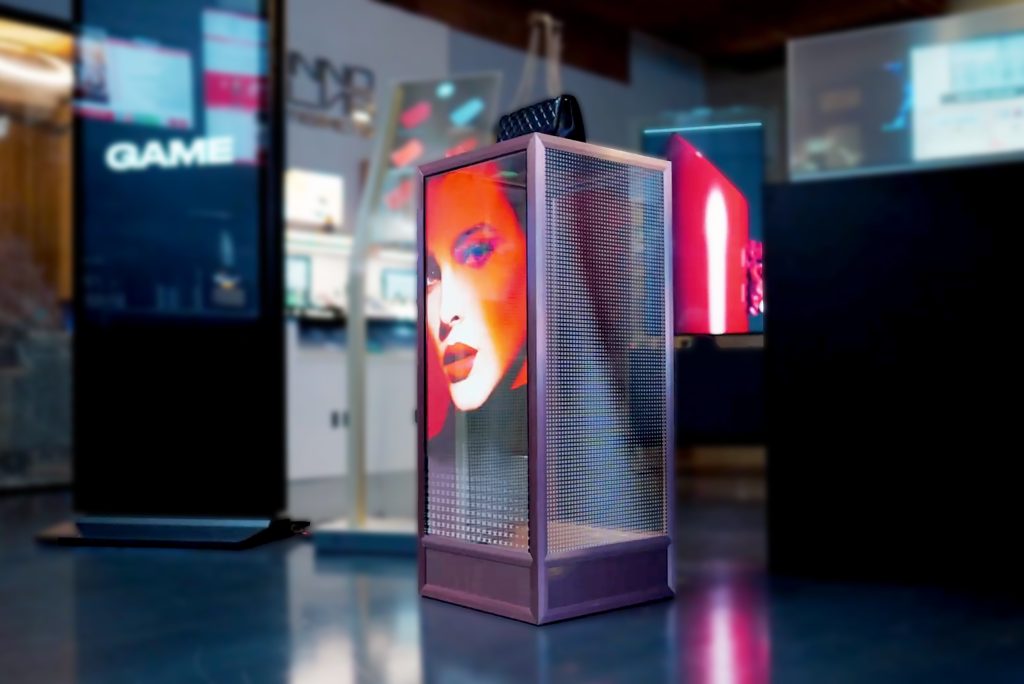
Transparent OLED screens take the wow-factor even further. These ultra-thin, see-through displays deliver stunning visuals directly onto the product itself. Imagine a luxury watch highlighted by animation that showcases its craftsmanship and story. The result is immersive, sleek, and undeniably modern — merging digital storytelling with tangible experience.
- Lift & Learn: Engage, inform, and monetize product displays.
Lift a product, and the story begins. Nearby screens instantly spring to life with videos, product details, or brand messages tailored to that item — that’s the magic of Lift & Learn technology.
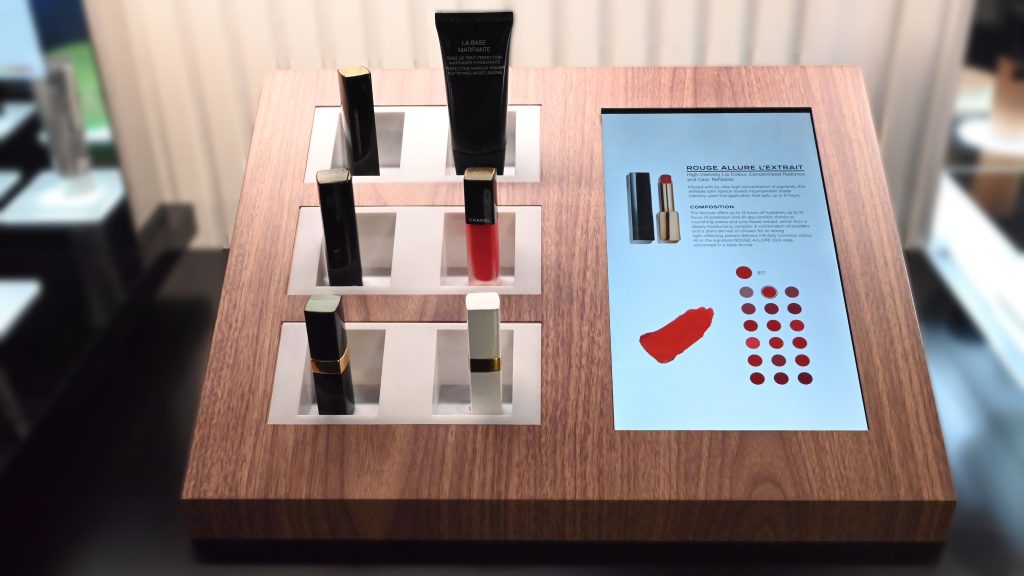
This smart signage doesn’t just react — it listens. Each lift is recorded, tracking which products spark curiosity and how that interest turns into sales. That feedback loop helps retailers optimize merchandising and product placement, while the engagement data fuels brand strategy.
Because digital displays draw 400% more views than static signage, brands are eager to get screen time.[5]Retailers can monetize that attention by selling ad space and using engagement metrics to prove ROI. Every touch becomes a story — turning passive browsing into active discovery.
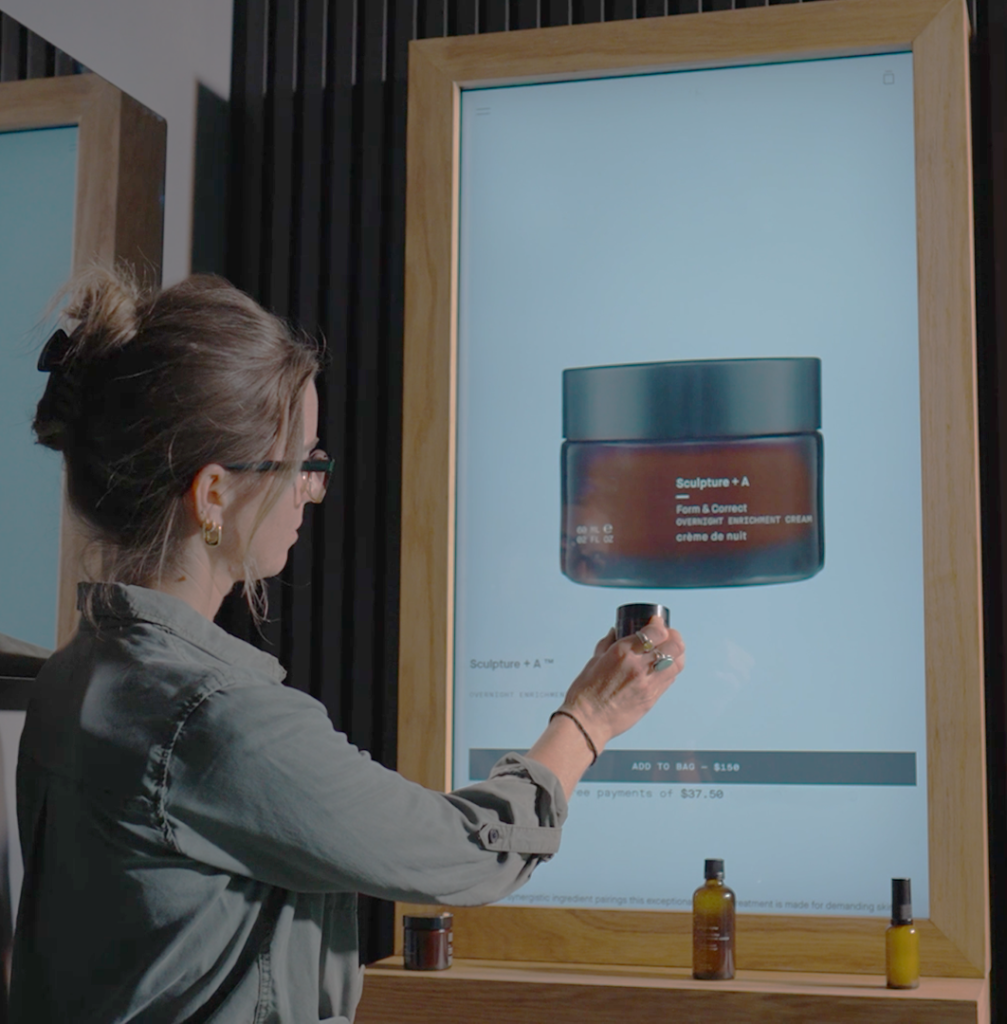
Together, these innovations create a true fusion of the physical and digital worlds, bringing the best of online into the store, and vice versa. They encourage brands to rethink not only how shoppers see products, but how they move through the entire experience. By unifying physical touchpoints with digital storytelling, retailers can design the next evolution of the omnichannel journey — one that feels seamless, engaging, and deeply human.
What to Look For in a Digital Signage Partner
Digital signage isn’t one-size-fits-all, and neither is the partner you choose to bring it to life. With the global market expected to reach $34 billion by 2029, brands are investing more than ever into signage that informs, engages, and converts.[6] The key is choosing a partner who understands your unique goals, your footprint, and your customer.
Here are the five key things to look for:
- Tailored solutions that fit your brand. Brand and promotional signage must reflect your identity and enhance your environment. Around 68% of shoppers say digital signs influence their decision to buy.[7] Whether it’stransparent mesh LED for high-impact storefronts, OLED for premium displays, or Lift & Learn for interactive engagement, technology should align with your brand vision.
- Creative that captures attention. Sleek hardware is only half the story. With an average engagement rate of 77%, content is king.[8] Choose a partner with in-house creative capabilities — motion graphics, animation, and storytelling — to make your screens unforgettable.
- A powerful CMS that puts you in control. Behind every successful network is smart management. Nearly 89% of digital signage systems are managed remotely, allowing for seamless updates and scheduling across multiple locations.
- Data and insights that drive results. The best signage doesn’t just display — it listens and learns. Brands that capture and act on engagement data see measurable gains, including up to a 33% sales boost and 19% more impulse buys.[9]
- Scalability that grows with your ambitions. Whether launching a flagship store or rolling out nationwide, your solution should expand effortlessly without losing quality or control.
Looking Ahead
Digital and interactive display signage is no longer a “nice-to-have” — it’s becoming the foundation of modern retail. Brands that lean into it aren’t just keeping up; they’re defining what’s next.
The right digital partner provides more than the best technology — they evoke trust, creativity, and collaboration. Look for a team that listens, adapts, and grows with you.
As the NRF’s data shows, the wave is only getting bigger. The question isn’t if digital signage will define the future of retail — it’s how fast it will reshape consumer expectations.
[1] https://broadsign.com/blog/turn-your-in-store-screens-into-revenue-machines-how-to-monetize-data-through-retail-digital-signage/
[2] https://acumencms.com/blog/7-ways-digital-signage-in-retail-boosts-sales-and-engagement/
[3] https://www.sci-tech-today.com/stats/digital-signage-statistics/
[4] https://www.sci-tech-today.com/stats/digital-signage-statistics/
[5] https://microserve.ca/blog/digital-signage-captures-400-more-views/
[6] https://www.sci-tech-today.com/stats/digital-signage-statistics/
[7] https://www.sci-tech-today.com/stats/digital-signage-statistics/
[8] https://www.sci-tech-today.com/stats/digital-signage-statistics/
[9] https://www.sci-tech-today.com/stats/digital-signage-statistics/
Article was contributed by Terry Monday, Chief Strategy Officer, Duggal Visual Solutions.

